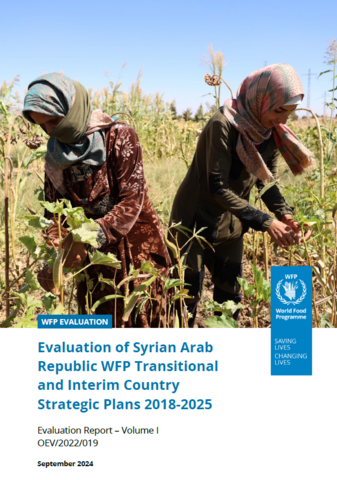
The evaluation assessed WFP’s relevance, strategic positioning and coherence; its contribution to outcomes; its efficiency in implementation; and the factors explaining its performance. It used a theory-based and mixed-methods approach to serve accountability and learning purposes.
Under the evaluated interim country strategic plans, WFP has effectively laid the foundation for a “dual track” approach to its work in the Syrian Arab Republic, providing large-scale humanitarian assistance combined with support for early recovery and creating conditions for self-reliance. However, the situation of the crisis-affected population has deteriorated, and vulnerability has increased due to the protracted nature of the crisis, which has spanned more than a decade.
The widespread destruction of productive assets has made the population more vulnerable and unable to withstand shocks, including the economic crisis and the effects of climate change. In addition, the number of people in need of assistance has been growing exponentially over the last five years at a time when donor aid budgets have decreased.
The evaluation concludes that WFP has made important contributions to addressing food insecurity through large-scale food assistance; a strategy of distributing assistance more thinly before reducing the number of beneficiaries was found to be the right approach. WFP’s efforts in the country have been seriously hindered by a range of external factors including decreasing financial resources, which has posed challenges in the complex and high needs environment. At the same time, WFP has successfully navigated a challenging environment, adhering to humanitarian principles, incorporating a conflict-sensitive perspective into its activities and increasingly paying attention to cross-cutting issues. Finally, although WFP has made considerable efforts to assess vulnerability, it has not yet fully demonstrated the effective prioritization of the most vulnerable populations, including women and girls.
